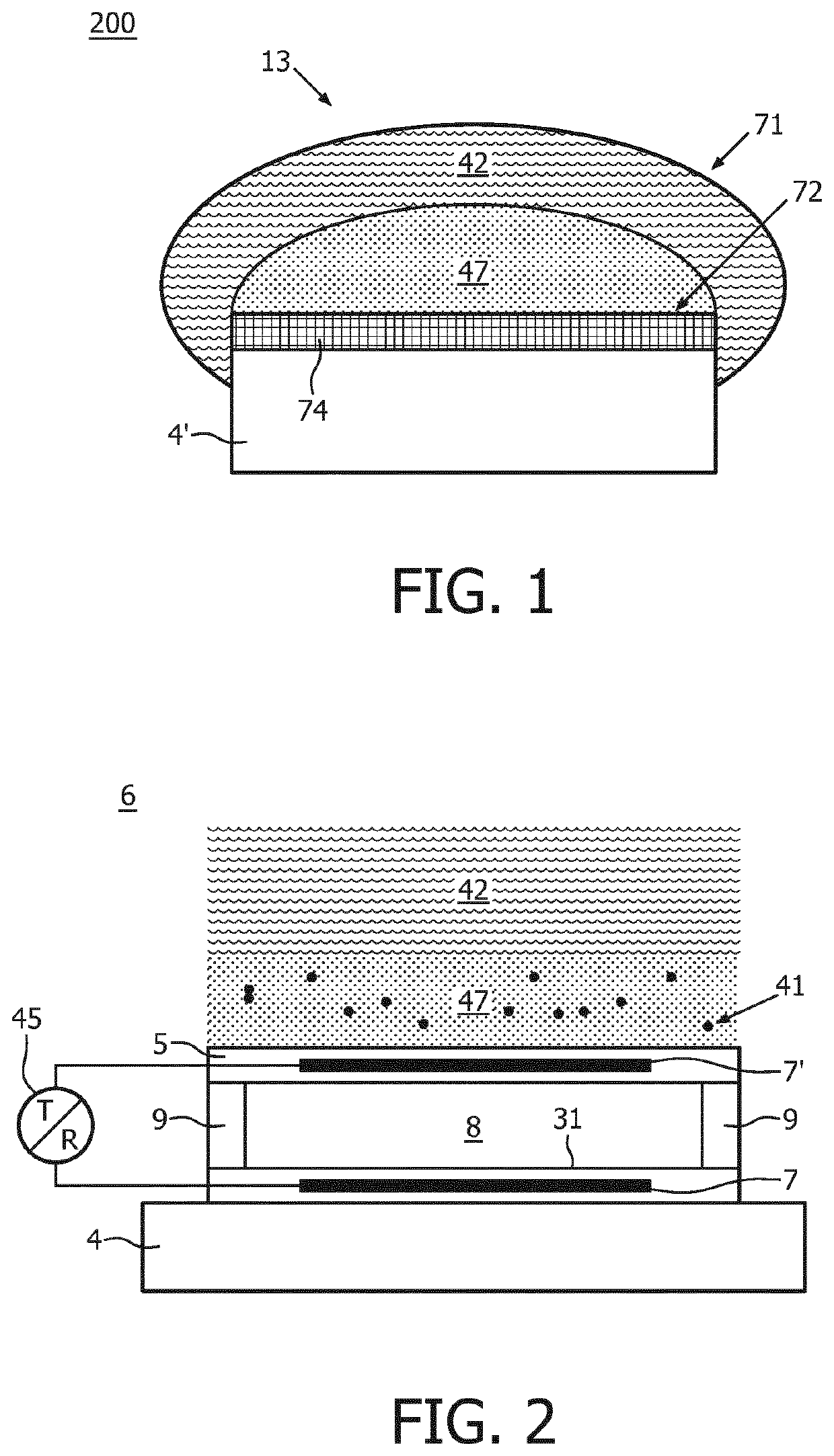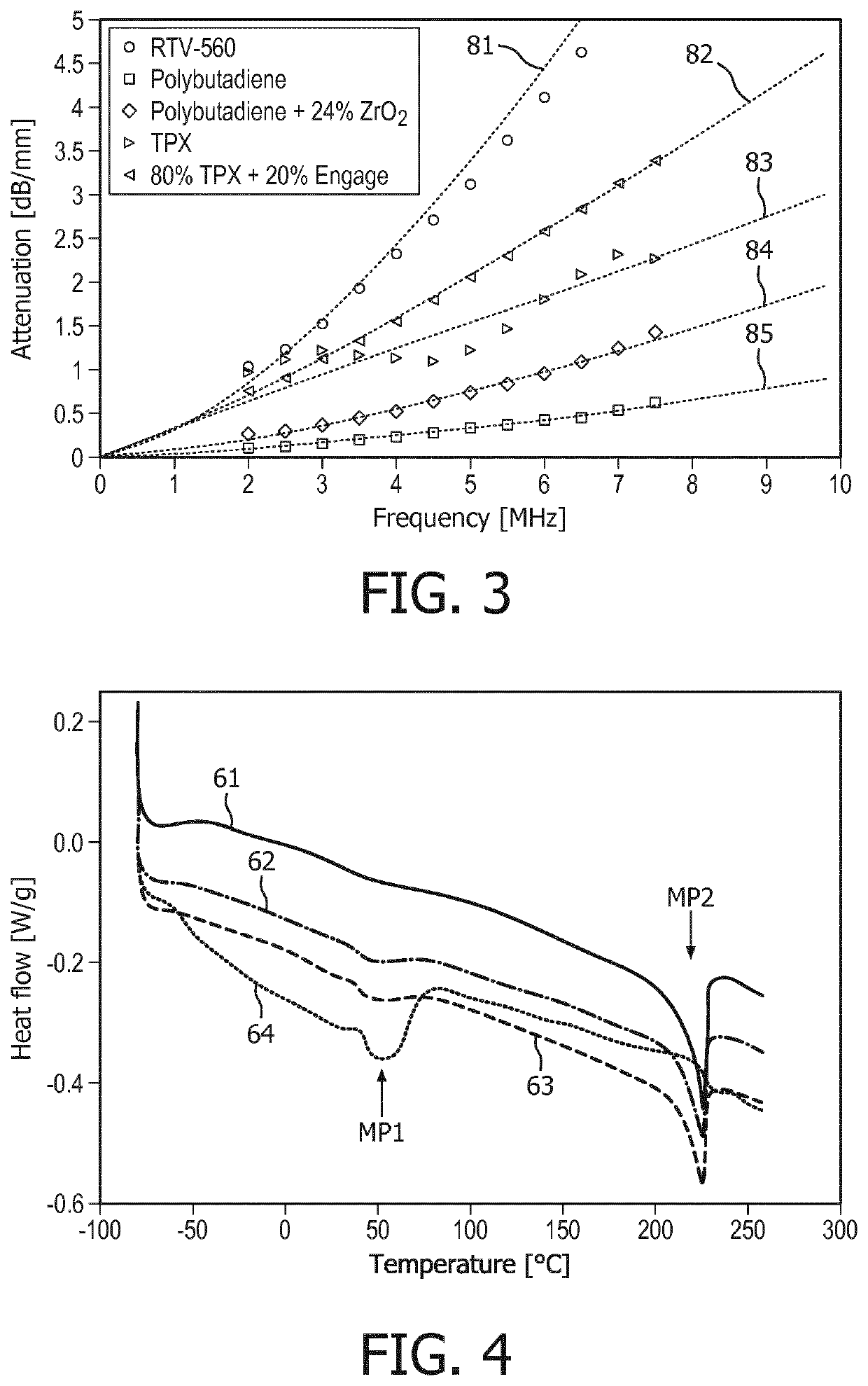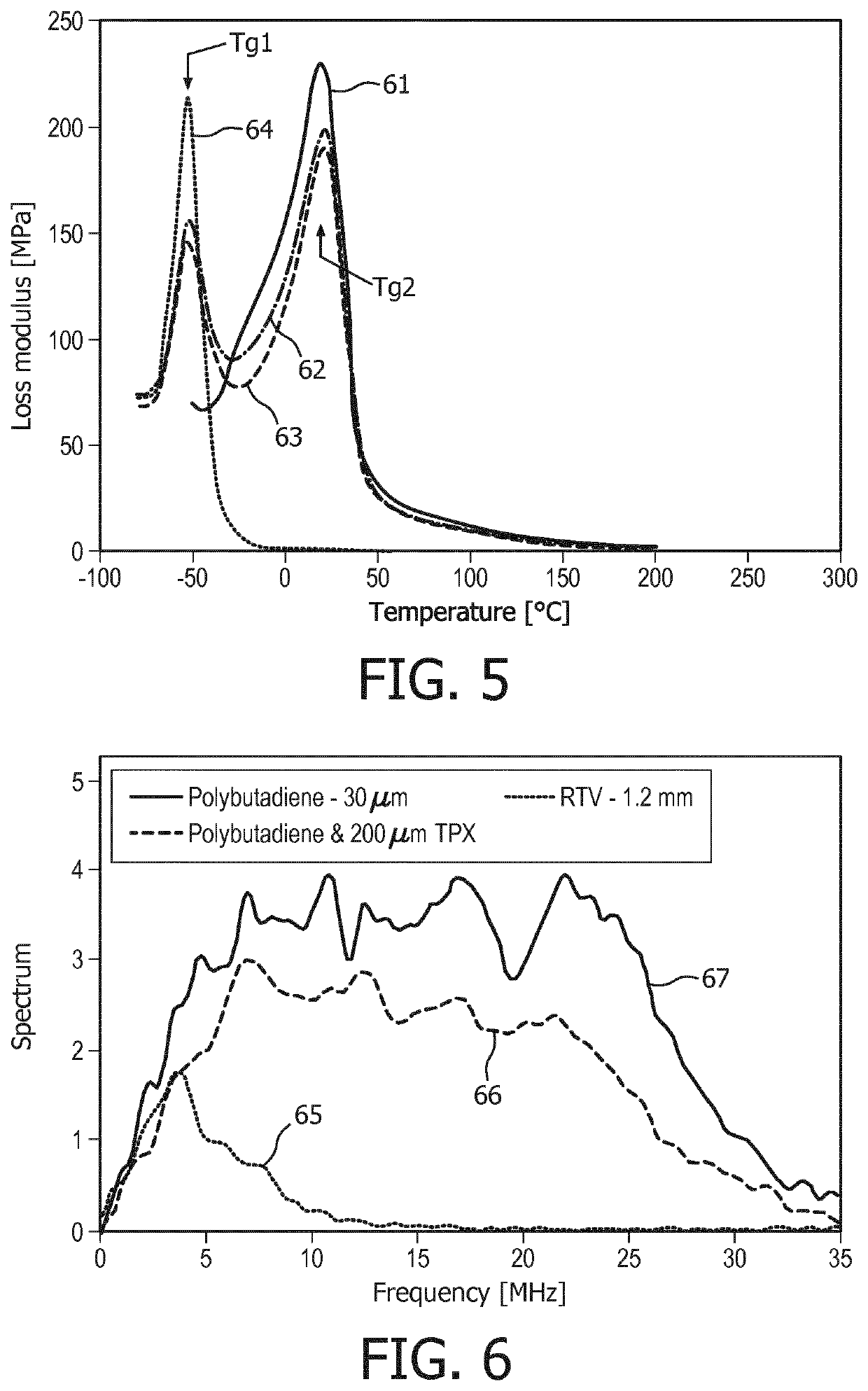Acoustic window layer for an ultrasound array
a technology of ultrasound array and acoustic window layer, which is applied in the field of acoustic window layer for ultrasound array, can solve the problems of image artifacts, inability to provide acoustic window material, and high cost of ultrasound ultrasound applications, so as to improve the propagation of acoustic waves
- Summary
- Abstract
- Description
- Claims
- Application Information
AI Technical Summary
Benefits of technology
Problems solved by technology
Method used
Image
Examples
Embodiment Construction
[0031]FIG. 1 shows schematically and exemplarily an embodiment of an ultrasound probe 200 according to the invention, comprising an ultrasound array 74. The ultrasound array 74 has an ultrasound wave emitting side facing an inner surface 72 of an acoustic window layer 13 and a backing side opposite to the emitting side. The ultrasound array may contain ultrasound transducers coupled to an integrated circuitry adapted to drive and control the transducers in the array. The backing side of the array is electrically coupled to a probe's base 4′, which communicates input and output signals of the integrated circuitry to and from an ultrasound system 202 (FIG. 8).
[0032]The acoustic window layer 13 comprises an outer layer 42 located at an outer surface of the acoustic window layer 13. The outer surface is intended to face a patient 201 or a body to be examined by the ultrasound imaging system 202. The outer layer 42 comprises a blend of a thermoplastic polymer selected from a polyolefin f...
PUM
| Property | Measurement | Unit |
|---|---|---|
| acoustic wave velocity | aaaaa | aaaaa |
| acoustic wave velocity | aaaaa | aaaaa |
| density | aaaaa | aaaaa |
Abstract
Description
Claims
Application Information
 Login to View More
Login to View More - R&D
- Intellectual Property
- Life Sciences
- Materials
- Tech Scout
- Unparalleled Data Quality
- Higher Quality Content
- 60% Fewer Hallucinations
Browse by: Latest US Patents, China's latest patents, Technical Efficacy Thesaurus, Application Domain, Technology Topic, Popular Technical Reports.
© 2025 PatSnap. All rights reserved.Legal|Privacy policy|Modern Slavery Act Transparency Statement|Sitemap|About US| Contact US: help@patsnap.com



